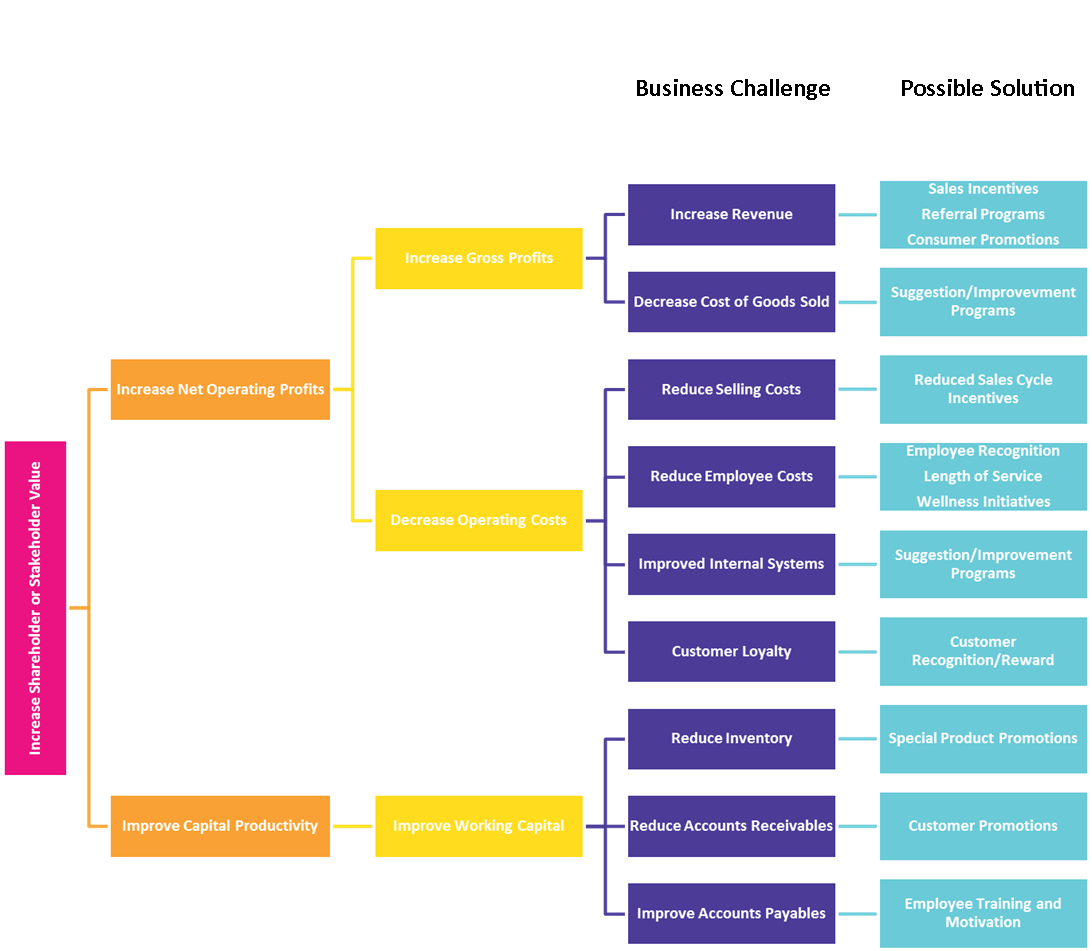Incentive Motivation: Best Practices for Incentives
Too often, we think incentive programs and recognition initiatives are only for salespeople. Truth is, almost every organization can benefit from using both recognition and incentive programs as part of their overall strategy to impact culture and drive desired business behaviors. Effective recognition programs are typically based on the core values of the organization (the things you want to be known for internally and externally) and should be designed to reward and recognize the behaviors that stand the test of time. Well-designed recognition programs are critical for employee engagement, but they are not the only tool required for businesses to be successful and to increase employee engagement.
Motivation in the Workplace: Incentives at Work
Recognition programs recognize behaviors that have already happened, whereas, incentives are an important element to guide and direct behaviors in an organization moving forward.
Recognition = Past Behaviors
Incentives = Future Behaviors
At their core, incentives focus on the individual and their behaviors – specific behaviors you can track and reward. Incentives focus on strictly defined, personal outcomes; that when achieved, result in a reward. As an example, a salesperson is given an objective based on their previous year’s performance. If they meet or surpass that objective, they are rewarded. To keep this incentive from being conflated with compensation and to keep it from becoming an “entitlement,” we recommend non-cash rewards.
Incentive Motivation: Non-Monetary Rewards
One of the main benefits of non-cash incentives is that you have the flexibility to start and stop them as needed without affecting your audience’s income or lifestyle. This provides a company with the ability to change and adapt as the marketplace changes. With non-compensation-based incentives, you can focus attention on one objective this quarter and another next – without disrupting the income expectations of the target audience. Therefore, when thinking about incentives – look for things that need attention now – and may not need attention in the future. Look for changes in the market that you believe are “blips” or short-term needs. Need a sales spike? Run an incentive. Need to launch a new product? Run an incentive.
Incentives at Work: Best Practices
When developing incentive activities, here are some important factors to keep in mind.
- Make sure incentives are the right solution to your challenge. Take the time to determine if it is a training, communication, or process issue before defaulting to an incentive program. If you’re convinced the issue is getting people to pay attention and adopt an unfamiliar/new behavior – then try an incentive.
- Use non-cash awards. To remove the connection between the incentive and the long-term employment contract, non-cash awards are the preferred reward type, whenever possible. Point programs allow participants to select from a myriad of rewards according to their lifestyle and personal motivators.
- Set short-term time frames for programs. Setting long-term objectives reduces the effectiveness of the program and increases the award amount needed to maintain program attention. Shorter-term programs of around 90 days are best to hit the mark with your business goals and objectives.
- Tie the award criteria to specific behaviors, not just outcomes. Incentives tied solely to an outcome can create unintended consequences. If you reward people for simply submitting 100 referrals, you will get 100 unqualified referrals. Ask people to submit referrals for qualified people, so in turn, you will see qualified referrals come through.
- Do not overvalue the awards. It is better to have a slightly lower value for the award than to go overboard on the award value. When the value of the award far exceeds the effort involved, you will get unintended consequences, cheating, and duplicity in your program.
- Take breaks when using incentives. Don’t always offer incentives in 90-day increments back-to-back. Offer an incentive (if needed) then withhold for 30 days. Then, offer a different incentive.
- Make sure your incentive does not violate any of the values of your organization. The values and criteria in your umbrella recognition program are the guidelines for all other activities. Your incentive should never send a mixed message to your audience.
- Create a “review team” for incentives. Create a team of managers from different areas of the company to provide a much-needed sounding board. Including non-participating managers from different departments/divisions will ensure you’re seeing the big picture and have thought through the incentive application. Often, outsiders see holes in the program design – and can be a great added point of view.
- Accompany incentives with public recognition. According to the Incentive Research Foundation, 40% of incentive programs are now using social recognition. This will only continue to rise with the use of technology and increased knowledge of the benefits. Social recognition helps to make the award recipient feel valued as well as fosters camaraderie and reinforces the company culture.
Incentives at Work: Nine Business Challenges and How to Solve Them
What business challenges do incentives help solve? While incentives are typically thought of in the context of sales, there are many areas within a company where incentives can be applied. The chart below provides additional areas where incentives can have an impact. This is simply a starting point for you to think about how you can impact business performance with a properly designed program. Remember – incentives work best when they focus on specific behaviors that can be impacted in the shorter term.






